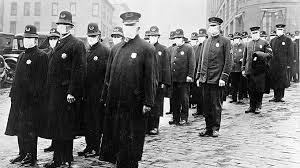“It is horrible. You can stand to see one, two or twenty men die, but to see these poor devils dropping like flies gets on your nerves. We have been averaging about 100 deaths per day, and it’s still going on.” -An army doctor near Boston in September, 1918
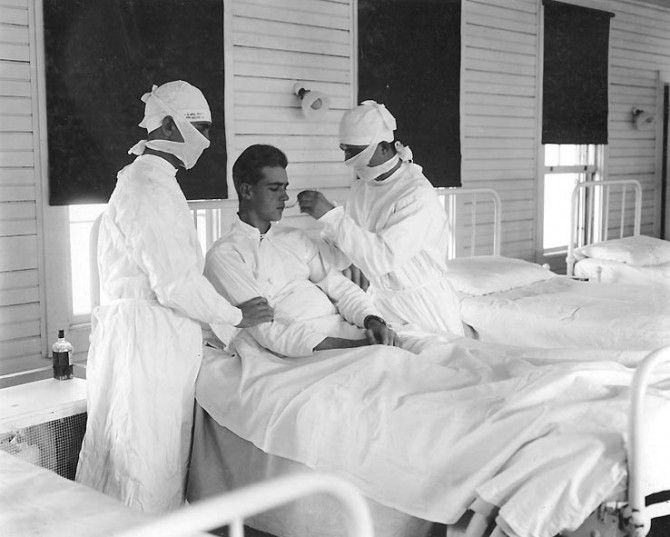 The first documented case of Ebola in the United States is being treated in Texas, and that’s bringing intense media attention to the deadly illness. It has killed 3,300 people so far this year in West Africa, with Sierra Leone alone reporting a new infection every twenty minutes.
The first documented case of Ebola in the United States is being treated in Texas, and that’s bringing intense media attention to the deadly illness. It has killed 3,300 people so far this year in West Africa, with Sierra Leone alone reporting a new infection every twenty minutes.
That, in turn, is triggering new fears of some deadly pandemic marching unrestrained across the globe.
But here’s the thing: it happened once before … and it happened where you live.
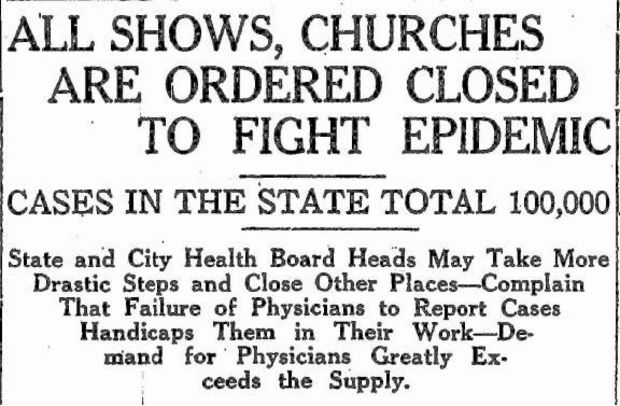 I first learned about it when I was a boy of 13. We were visiting my Aunt Martha (yes, I actually had a great-aunt named Martha) on her little farm outside Trenton, Missouri. She was a sweet, white haired, apple cheeked woman who had seen more than her Biblical three score and ten years. A relative was ill, and the old folks were discussing it. That led to talk of “the flu.” They knew what that meant, for they had all lived through it. They didn’t mean your garden variety influenza that knocks people down every cold and flu season. Oh no; this was The Flu. The 1918 – 1919 Spanish Flu Pandemic.
I first learned about it when I was a boy of 13. We were visiting my Aunt Martha (yes, I actually had a great-aunt named Martha) on her little farm outside Trenton, Missouri. She was a sweet, white haired, apple cheeked woman who had seen more than her Biblical three score and ten years. A relative was ill, and the old folks were discussing it. That led to talk of “the flu.” They knew what that meant, for they had all lived through it. They didn’t mean your garden variety influenza that knocks people down every cold and flu season. Oh no; this was The Flu. The 1918 – 1919 Spanish Flu Pandemic.
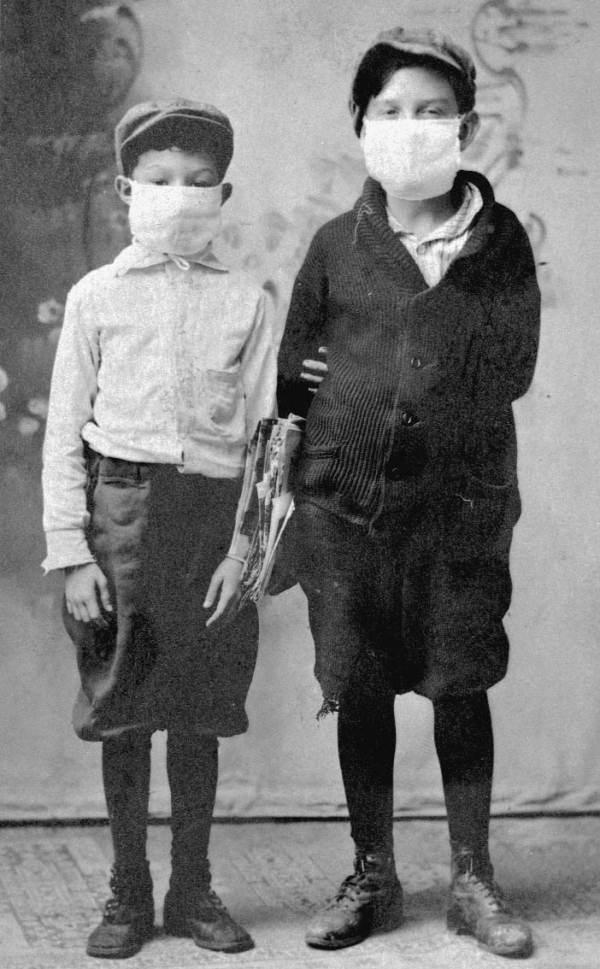 “What was it like?” I asked Aunt Martha. “Well,” she said after a long thoughtful pause, “you wouldn’t want to get it.” That, I later learned, was a massive understatement. But Aunt Martha was like that, always putting things as kindly as possible.
“What was it like?” I asked Aunt Martha. “Well,” she said after a long thoughtful pause, “you wouldn’t want to get it.” That, I later learned, was a massive understatement. But Aunt Martha was like that, always putting things as kindly as possible.
The illness mysteriously popped up, out of the blue, in Haskell, Kansas in early March, 1918. The local newspaper reported “18 cases of influenza of a severe type.” The strain was particularly savage. A person would wake up fine the morning, start feeling unwell at noontime, and be dead by evening. It caused a fever so intense, many patients begged to die. Lungs filled rapidly and, in the end, people quickly suffocated.
In a particularly troubling twist, the Spanish Flu seemed focused on those in the prime of life. Most influenza strains target the vulnerable – the very young and the very old. Not so in this case. People from the late teens to the early 30s were most susceptible, for some reason science has never been able to explain.
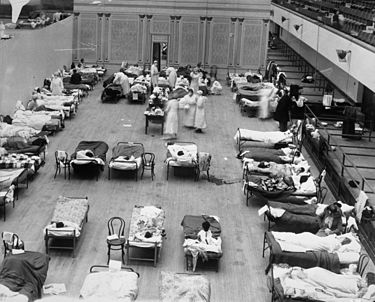 The outbreak’s timing couldn’t have been worse, for it coincided with the First World War. Thousands of soldiers gathered in training camps, where they coughed and sneezed on each other, then got on transport ships and sailed to France, carrying the virus with them. This was a world war, after all, so the virus moved with the military. In astonishingly short time, people were sick everywhere from the Polynesian Islands to the Antarctic.
The outbreak’s timing couldn’t have been worse, for it coincided with the First World War. Thousands of soldiers gathered in training camps, where they coughed and sneezed on each other, then got on transport ships and sailed to France, carrying the virus with them. This was a world war, after all, so the virus moved with the military. In astonishingly short time, people were sick everywhere from the Polynesian Islands to the Antarctic.
The United States wasn’t spared. The flu spread from city to city, causing wholesale social upheaval as it went. Schools, churches, businesses, movie theaters were all closed for weeks at a time. Train service was drastically reduced, and stores ran low on essential goods as a result. When postal workers got sick, mail delivery ground to a halt. Funerals were held outdoors, in hopes fresh air would protect mourners from the virus. (It didn’t.)
 More than 200,000 people lined Philadelphia’s streets for a massive Liberty Loan Parade one morning in September 1918; hundreds of them were dying by nightfall.
More than 200,000 people lined Philadelphia’s streets for a massive Liberty Loan Parade one morning in September 1918; hundreds of them were dying by nightfall.
Some state legislatures even passed laws that made spitting a crime, in hopes that would halt the spread. (Again, it didn’t.)
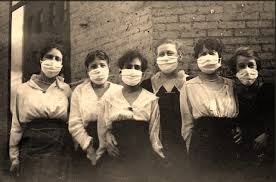 And everywhere you looked, there were masks. Young, old, middle-aged, everyone wore a white gauze mask on their face. A few cities enacted laws mandating their usage, and some people openly resisted wearing them. Virology was in its infancy then, so folks didn’t realize they were struggling against a virus, making the gauze masks useless.
And everywhere you looked, there were masks. Young, old, middle-aged, everyone wore a white gauze mask on their face. A few cities enacted laws mandating their usage, and some people openly resisted wearing them. Virology was in its infancy then, so folks didn’t realize they were struggling against a virus, making the gauze masks useless.
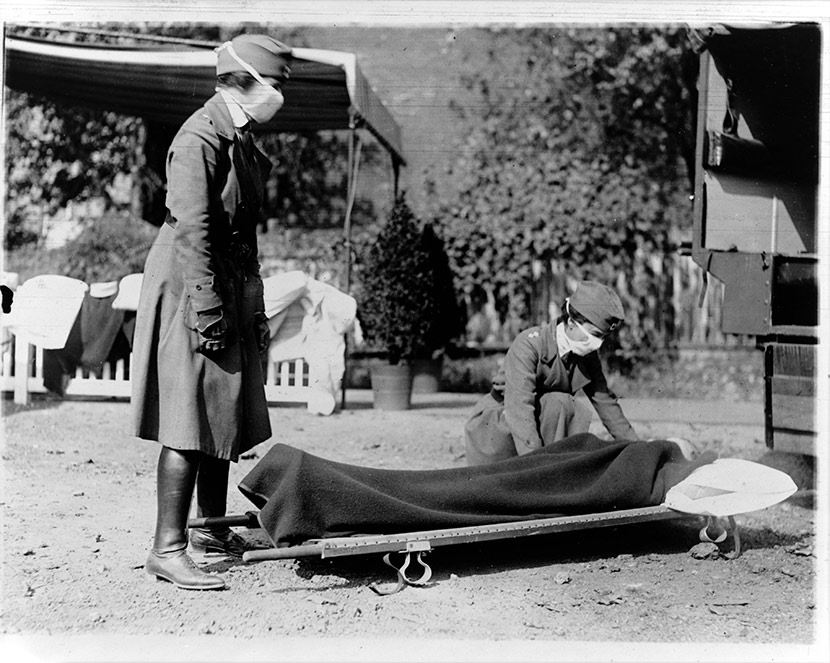 Numbers tell the ultimate story. There were 105,000,000 Americans at the time; 675,000 of them died from the flu, more than were killed in World War I. In all, the illness killed some twenty million people worldwide.
Numbers tell the ultimate story. There were 105,000,000 Americans at the time; 675,000 of them died from the flu, more than were killed in World War I. In all, the illness killed some twenty million people worldwide.
No wonder Aunt Martha and everyone else who lived through it still shuddered when they described the experience sixty years later.
America’s collective memory is shamefully short, and most of our contemporaries know nothing about this horrible pandemic. History is a tough teacher, and its lessons are painfully to the point.
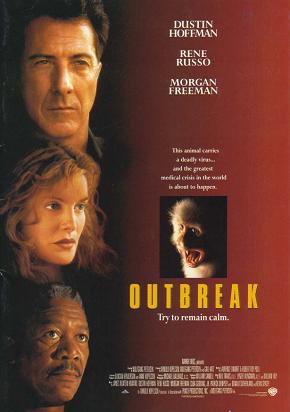 In this case, it happened here once, and it could happen again.
In this case, it happened here once, and it could happen again.
I’m not saying Ebola will reach pandemic status in the U.S. In fact, because that particular infection spreads much differently from influenza and other viral illnesses, it probably won’t.
Still, the next time you watch a movie such as Outbreak, remember it’s not that far-fetched. Science fiction, in this case, is close to becoming science fact.
 Above all else, remember that a pandemic is more than material for scientific study. The human cost is too real, and is too painfully high. It was that way in 1918, and it will be that way the next time, too.
Above all else, remember that a pandemic is more than material for scientific study. The human cost is too real, and is too painfully high. It was that way in 1918, and it will be that way the next time, too.
Did you find this enjoyable or helpful? Please continue to join me each week, and I invite you to read Tell it Like Tupper and share your review!
Curious about about Tell It Like Tupper? Here’s a chance to see for yourself. Take a sneak peek at a couple chapters in this free downloadable excerpt.

